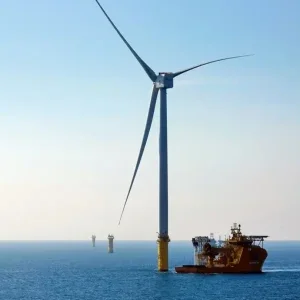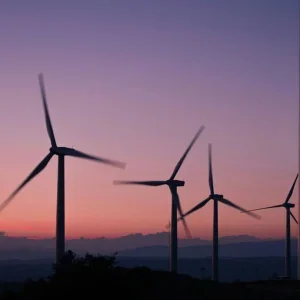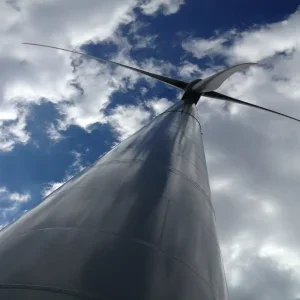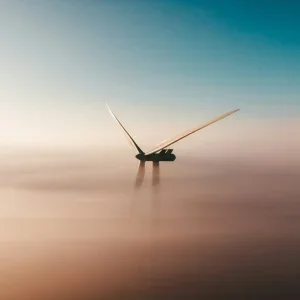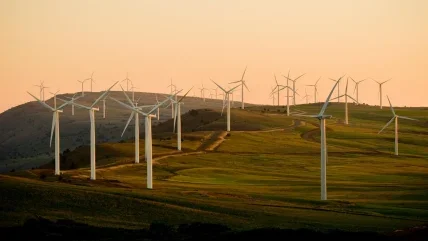
Given its ambitious net-zero targets – coupled with recent ‘black swan’ events, such as the global pandemic and the ongoing war in Ukraine – it should come as no surprise that Europe has been redoubling efforts to reduce fossil fuel dependency by investing in clean renewable energy, as well as bringing supply chains closer to home for the longer term.
Key to this is exploiting naturally available wind energy to generate electricity and – more specifically – increasing operational efficiency across the continent by fostering policy convergence, while promoting the use of so-called ‘energy islands’ offshore. Currently, Europe’s offshore wind farms are almost all connected to the energy system through subsea power cables that run from each individual wind farm back to their respective shores. However, energy islands offer an alternative – artificial islands constructed with the capacity to store several gigawatts of energy from nearby wind farms, centralising the transmission of the energy they produce. Some islands will also be connected to each other and are intended to improve energy flows between different countries in Europe.
One major plank of this long-term strategy is the InterOPERA project, formally launched by the EU in January this year. With €69m of funding from Horizon Europe, the project – which brings together more than 20 partners at the forefront of renewable energy development, power system manufacture, and operation and grid management – aims to craft future interoperability standards for multi-terminal high-voltage direct current (HVDC) grids used in offshore electricity.
Lofty ambitions
Against this backdrop, Europe is looking to build around 450GW of offshore wind by 2050, with the EU alone having set a target of 300GW. This includes 111GW of offshore renewable generation capacity by the end of the decade – almost double the 60GW set out in its Offshore Renewable Energy Strategy in November 2020.
“For Europe to deliver on its 300GW offshore wind capacity target by 2050, future offshore transmission systems will not only transmit electricity to shore, but also serve as interconnectors between the wind farms and between member states,” a European Commission representative notes, speaking on the EU’s efforts. “Hence, the need for the HVDC connectors to be interconnected in a meshed grid.”
The official adds, “Energy islands are an excellent example of the green transition [and] global ambition, as well as cooperation within Europe, where the electricity produced by offshore wind farms in energy islands can be used onshore directly for electrified demand. This is key to replacing fossil fuels and increasing the share of renewables in our energy mixes.”
Given such lofty ambitions, hybrid offshore wind farms are set to play an increasingly important role in delivering targets. That’s not to say that they don’t face challenges of their own. Indeed, Sébastien Silvant of the SuperGrid Institute and project coordinator of the InterOPERA Project, highlights the obstacles presently involved, noting: “It is difficult or even impossible to connect currently planned and built HVDC connections to an increasingly interconnected and meshed offshore grid.”
For Silvant, the ideal solution is to develop joint standards in Europe that ensure converter stations and components of the different HVDC suppliers become interoperable and interchangeable. This would enable grid planners and grid investors to freely choose from a full range of components and converter stations from the different suppliers that best suit their specific needs.
Developing a framework or system integration
To this end, InterOPERA is tasking itself with defining the functional requirements of each grid element and matching these with the needs of the transmission systems operators. The project will subsequently develop a framework for system integration and solutions for interoperability issues. Yet, as Silvant also notes, the frameworks and processes used are often project specific – the technical specifications of HVDC modules being custom proprietary ones.
It is also entirely possible that interoperability may be insufficient to enable the interconnection of HVDC transmission assets, which is why there should also be a compatibility in the system topologies, configurations, and ratings. These incompatibilities may be solved by innovative interfacing structures like DC/DC converters, but would also bring additional costs and are not yet mature. “Because of these high vendor lock-in costs caused by the lack of the correct multi-vendor interoperability frameworks, the risks in developing multi-vendor projects are therefore still too high – at present,” says Silvant.
0.4GW
The total energy capacity of the existing German– Danish Kassø- Frøslev energy island, also known as Kriegers Flak.
WindEurope
That said, InterOPERA will continue to proceed by developing control and protection systems for the different grid elements, including offshore and onshore AC/DC converters, power pack modules, switching stations and controllers. “The technical solutions developed in InterOPERA will result in changes in the design of new project development and procurement schemes,” Silvant adds, “splitting the system into different potentially smaller lots, assigning associated responsibilities and liabilities to the different stakeholders.”
“It is difficult or even impossible to connect currently planned and built HVDC connections to an increasingly interconnected and meshed offshore grid.”
Sébastien Silvant
It is worth noting that non-EU states such as the UK and Norway are represented in InterOPERA – the UK through GE Renewables and Norway via the participation of Statnett and Equinor. However, this doesn’t entirely eliminate the prospect of policy divergence between EU and non-EU states. Indeed, the UK’s Aquila project currently runs in parallel to InterOPERA.
However, there is a strong desire shared by Europe and the UK to mitigate divergence as much as possible, according to Silvant – not least because “any divergence could lead to a market with different standards in different regions and, more problematically, incompatibility of HVDC infrastructures that could otherwise be interconnected offshore in the North Sea”.
300GW
The offshore wind capacity that the EU is looking to build by 2050.
European Commission
To this end, a consultation process is planned to ensure all relevant actors involved in the project directly or indirectly have the ability to review and influence the development of the project results before the consortium completes and publishes the final versions of its deliverables, according to Silvant.
1.8GW
The total energy capacity of the Anglo-Dutch LionLink project, set to become operational in the early 2030s.
UK Government
Cornelis Plet, head of department, vice-president – power systems advisory at Norway’s DNV, takes up the point. Among the myriad of challenges from a technological standpoint lies the development of a grid code – a set of operational guidelines – for the meshed grid between the affected countries. This will ensure equipment for all parties will be designed along one common standard, which will enable compatibility.
As he notes, in words Silvant would echo: “This standard doesn’t exist currently and as a result DC systems being developed in different countries and operators – by different developers and by different manufacturers – have different characteristics that preclude the interconnection of such systems into one large grid.”
Focusing on the challenges
Plet also focuses on the logistical challenges involved, given the limited supply chains for both manufacturing capacity as well as transport and installation vessels for HVDC transmission equipment. “The number of vendors is very limited, and the manufacturing industry isn’t sufficiently incentivised to make costly and risky investments in new production lines, in the fear that the current boom will be temporary and production lines will go idle once it is over,” he notes, before adding, “This is further compounded by the constraints on the work force, there simply aren’t enough people with the required expertise to realise the required pace of build-out.”
Energy islands, however, are increasingly being viewed as a significant step forward across the renewables sector, though their benefits will be felt along a longer term than some projects. Of course, they still need to be accompanied by sufficient political and economic will to make them become a reality, and time will tell whether they’ll receive this.
The argument for energy islands, however, remains clear. These hybrid infrastructure projects, once the interoperability and logistical problems have been addressed, will offer export opportunities for offshore wind farms, as well as reducing the overall cost of establishing efficient grids. In addition, they will increase the resiliency and security of electricity supply in the region, exploit better complementarities in energy mixes and different weather conditions, and reduce the environmental impact compared to less optimised grid configurations.
While the EU is doing what it can within its mandate, according to Plet, ultimately it is the individual member states that will pull the strings – notably through forums such as North Seas Energy Cooperation, as well as via recent multi-lateral agreements between Germany, the Netherlands, Denmark, Belgium and the UK, for example.
“More could be done to ensure that costs and benefits are allocated fairly and transparently across borders within and outside the EU,” says Plet, adding that “the clearest example of this is Norway, where significant local opposition to more interconnection is growing as it raises the local power price.
“The hydropower and associated storage resources of Norway will be indispensable for the energy transition in Europe, so more could be done to channel the benefits of increased interconnection between Norway and the mainland to people and organisations who are affected by higher power prices,” he continues.
Getting to the point of interoperability will likely prove onerous – yet, that doesn’t mean the industry in 2023 is in stasis. As a case in point, the recently announced Anglo-Dutch LionLink initiative between National Grid Ventures and TenneT is set to become operational in the early 2030s. This project plans to carry some 1.8GW of electricity, dwarfing the existing German–Danish Kassø-Frøslev, also known as Kriegers Flak, which carries a mere 0.4GW.
Indeed, the new project, which will connect the UK and the Netherlands with both nations’ offshore wind farms, will be the largest of its kind in the world. To measure the scale of the project, it builds on the 8.4GW interconnector capacity the UK currently boasts by up to a fifth and will produce enough power for 1.8 million homes – equivalent to Birmingham and Manchester combined.
Answering the big questions
The larger question, however, is how the work of the EU, InterOPERA and others can enable an offshore power market and how this will impact the operation of the grid. According to Plet, it will require the formation of an offshore market model – one that will essentially dictate how many small zones the grid is geographically split into and within which the power price will be determined, based on congestion on links between the zones. Studies have shown, for example, that going to a small zones concept – where each node is its own zone – is the most economically optimal scenario. It also removes any regulatory issues around hybrid or multi-purpose infrastructure, according to Plet.
In the meantime, the LionLink initiative already demonstrates how seriously North Sea states are taking matters when it comes to building energy islands and achieving their net zero ambitions in the longer-term. Going forward, similar large-scale projects should emerge over the coming years. Demonstrating the political will and providing the necessary economic incentivisation will in part help the realisation of this. But will it be totally forthcoming?


